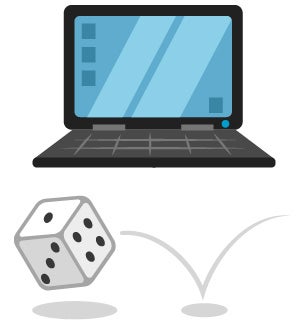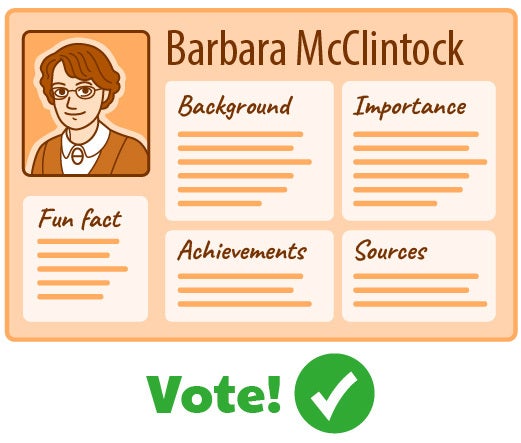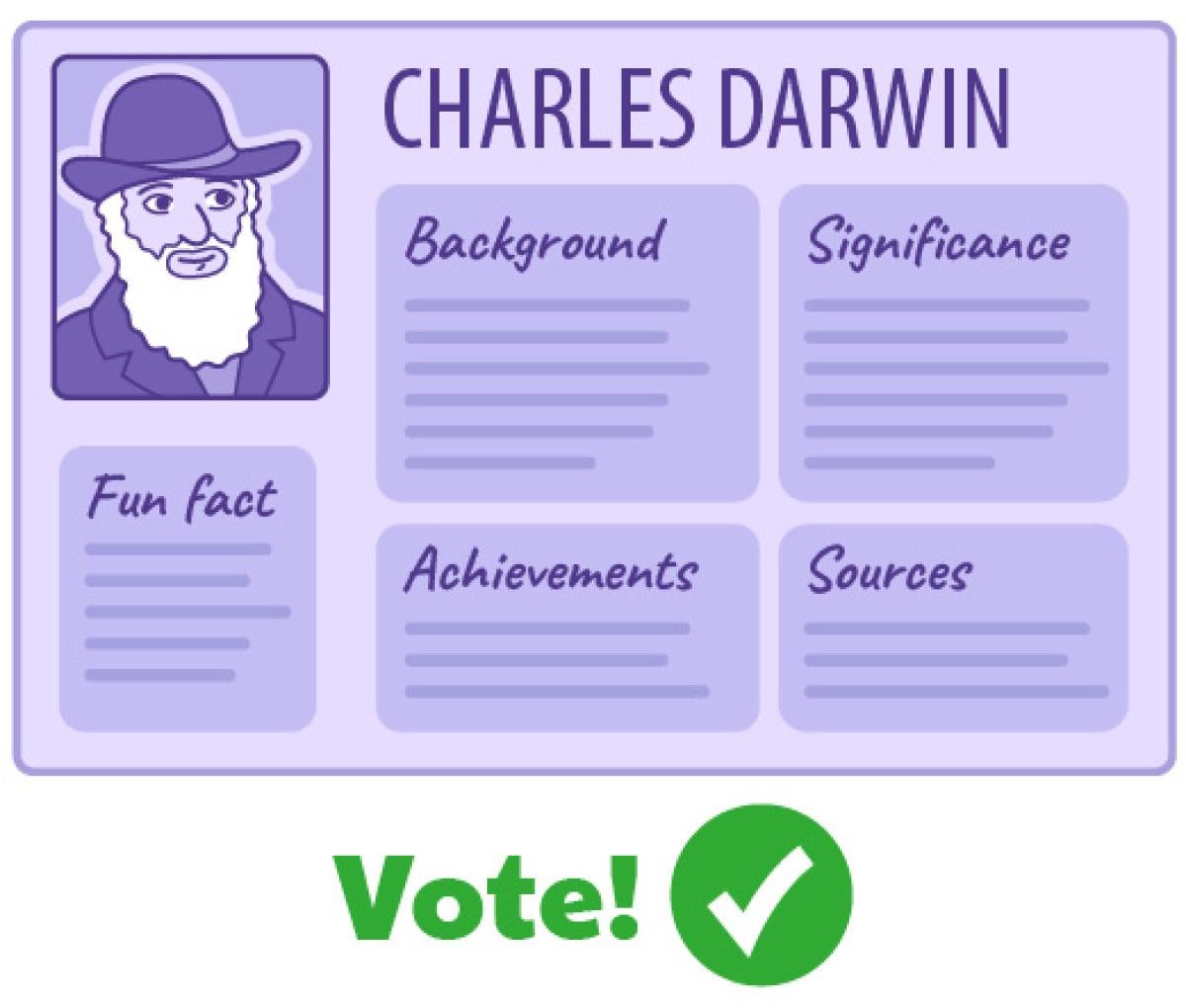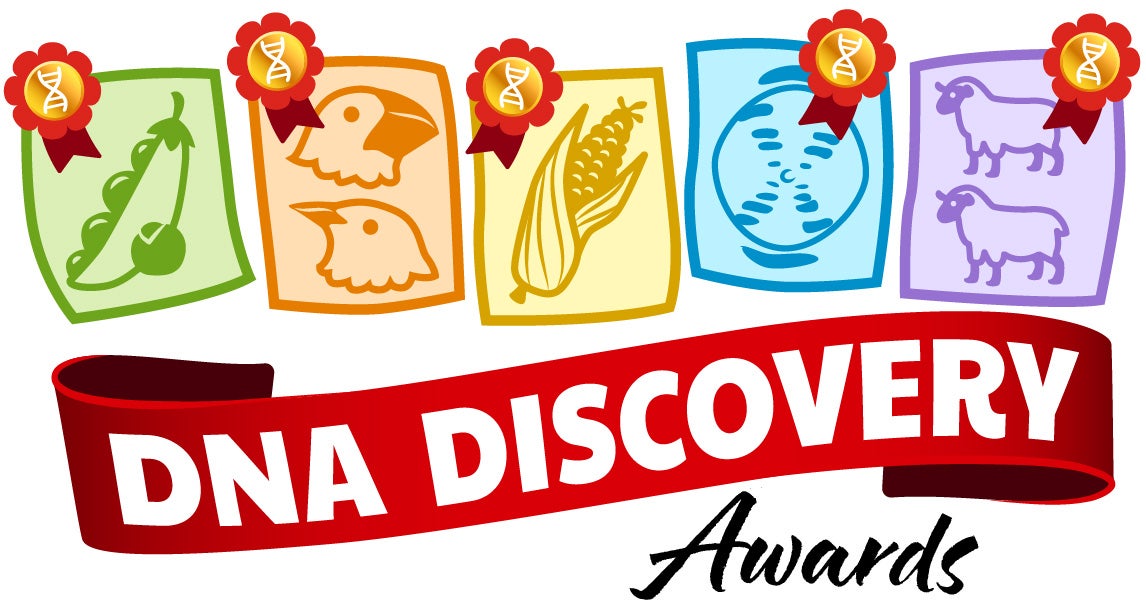DNA and Inheritance Activity - For Teachers
While we often talk to students about science discoveries, learning about the researchers responsible is often neglected. Our activity, The DNA Discovery Award is designed to get students to think about how science builds on itself, and that real people are behind all of our greatest (and smallest) discoveries.
For just a quick refresher on the basics of DNA, visit DNA ABCs.
Tips for Classroom Implementation
Time Required: 120-165 minutes over 3 days. Roughly 30-45 minutes on day one, 60 to 90 minutes on day two and 20 to 30 minutes on day 3.

Classroom set-up:
Make sure you've downloaded and reviewed the PowerPoint presentation.
The genome intro video can be found here: How to sequence the human genome
You can access printable timeline items here, to give out. Only one is needed per group.
You may also want to print out the rubric and an example poster for your students.
This project is fairly reliant on access to a computer, but if you have a well-stocked library (or can bring in outside books for references) you can probably do it based on books alone. Access to the internet is highly recommended.
Tips: For poster making, you can either have students do it digitally via tools such as:
- Google drawings
- Google slides
- Various free art programs
- By hand
Regardless of method, allow time for creation and for printing as necessary.

Posters can be made anonymously to attempt to preserve fairness. If you’d like to do that, have each poster be numbered so that students can vote. Do note that having students hang it up themselves helps reduce the setup time.
To facilitate student peer evaluation, a google form or some other voting method is recommended.
Here is an example poster judging form. If you’d like to make your own, here are the recommended questions:
- Student name
- Which poster was yours (if you made them anonymous)
- Which scientist should win the prize?
- Which poster on [EACH SCIENTIST] was the best?
This form should not be used to actually grade the students’ performance. It is designed more so that students have a reason to go read other student’s posters and learn about other scientists.
Objectives: After completing the lesson, students should be able to:
1. Determine the chronological order of specific achievements in genetics research.
2. Research a chosen scientist to learn about biographical and subject related information.
3. Construct a poster to quickly convey researched information to other students.
Standards
Arizona Science Standards
Grade 5
5.SP1.1 Create and use a chronological sequence of related events to compare developments that happened at the same time.
5.SP1.2 Explain how events of the past affect students’ lives and society
5.SP3.7 Construct and present explanations using reasoning, correct sequence, examples and details with relevant information and data.
Timeline answers:
Charles Darwin proposes the Theory of Evolution (Paper published November 1859)
Gregor Mendel discovers traits to be heritable with separate alleles and not via blending (paper published 1866)
Avery–MacLeod–McCarty experiment discovers that DNA, not proteins, carry genetic information (1944)
Transposons, genes that can move up and down the chromosome are discovered in corn by Barbara McClintock (1948)
Rosalind Franklin helps supervise the creation of the first ever X-ray Diffraction image of a single strand of DNA (1952)
A gene is “transcribed” (aka read and copied in a way us humans can understand) for the first time, a coat protein of a virus, by Walter Fiers and his team (1972)
Dolly the Sheep is cloned (1997)
The first draft of the Human Genome Project, a transcription of the entire human genome, is published (2001)
Read more about: DNA Discovery Awards
Bibliographic details:
- Article: History of DNA Research Lesson: Teacher Page
- Author(s): Dr. Biology
- Publisher: Arizona State University School of Life Sciences Ask A Biologist
- Site name: ASU - Ask A Biologist
- Date published: 31 Mar, 2025
- Date accessed:
- Link: https://askabiologist.asu.edu/experiments/teaching-genetics-history
APA Style
Dr. Biology. (Mon, 03/31/2025 - 12:44). History of DNA Research Lesson: Teacher Page. ASU - Ask A Biologist. Retrieved from https://askabiologist.asu.edu/experiments/teaching-genetics-history
Chicago Manual of Style
Dr. Biology. "History of DNA Research Lesson: Teacher Page". ASU - Ask A Biologist. 31 Mar 2025. https://askabiologist.asu.edu/experiments/teaching-genetics-history
Dr. Biology. "History of DNA Research Lesson: Teacher Page". ASU - Ask A Biologist. 31 Mar 2025. ASU - Ask A Biologist, Web. https://askabiologist.asu.edu/experiments/teaching-genetics-history
MLA 2017 Style

Learning about the history of science can help students understand science processes and information. The DNA Discovery Award is a great way for students to learn about genetics research.
Be Part of
Ask A Biologist
By volunteering, or simply sending us feedback on the site. Scientists, teachers, writers, illustrators, and translators are all important to the program. If you are interested in helping with the website we have a Volunteers page to get the process started.

